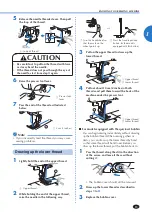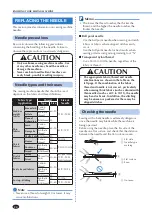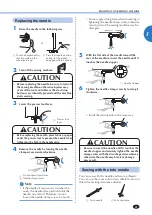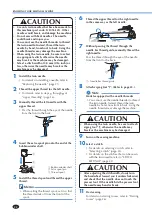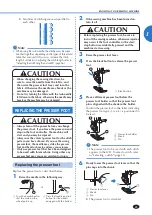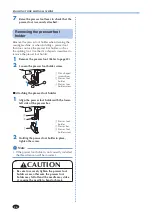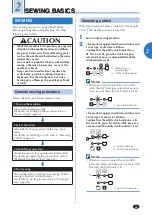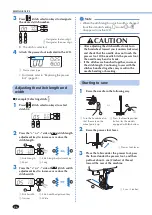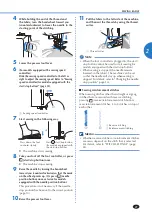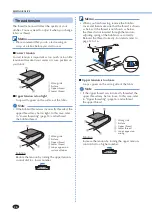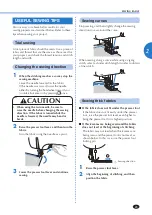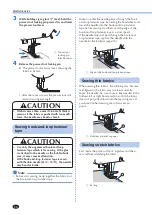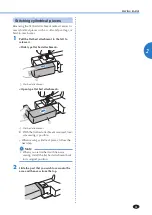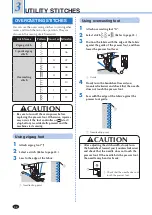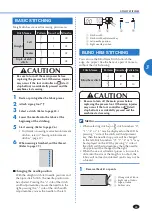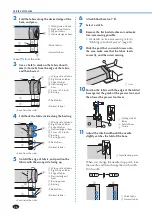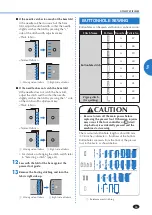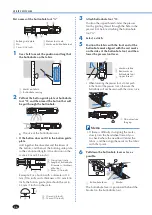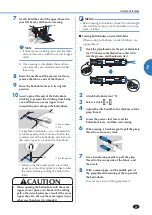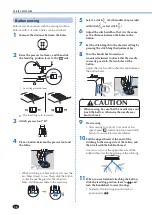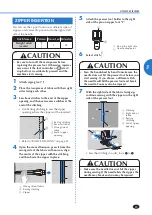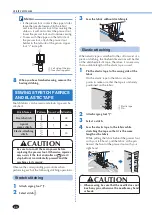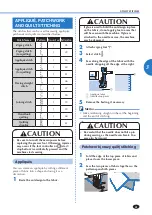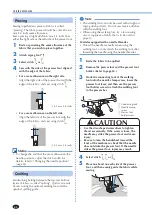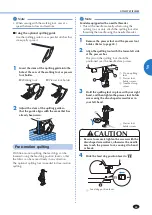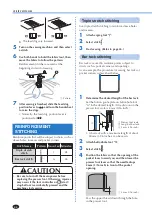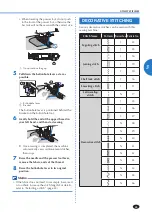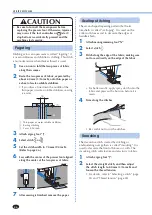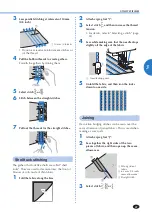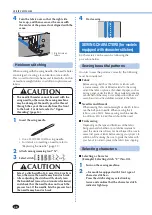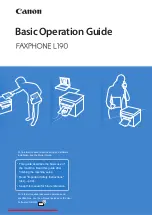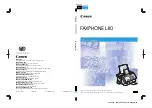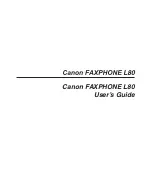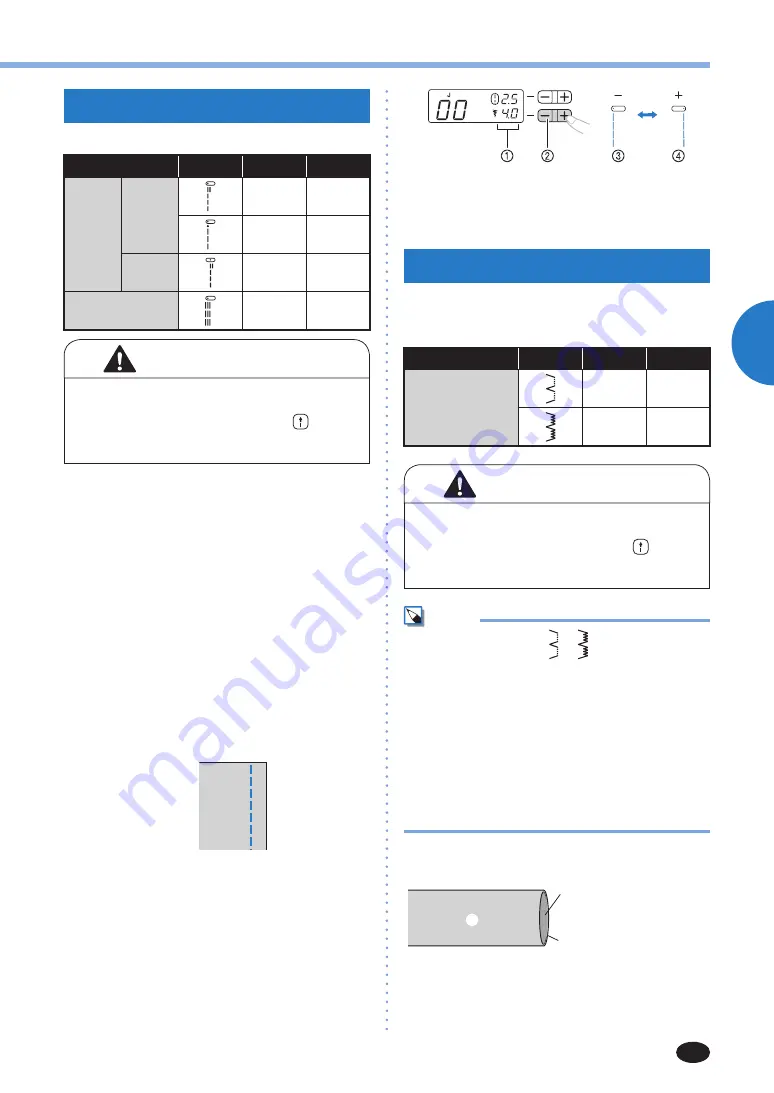
33
3
UTILITY STITCHES
BASIC STITCHING
Straight stitches are used for sewing plain seams.
Stitch Name
Pattern Presser Foot Pattern No.
Straight
Left
J
00
J
01
Center
J
02
Triple stretch
stitch
J
03
CAUTION
• Be sure to turn off the main power before
replacing the presser foot. Otherwise, injuries
may occur if the foot controller or (start/
stop button) is accidentally pressed and the
machine starts sewing.
1
Baste or pin together the fabric pieces.
2
Attach zigzag foot “J”.
3
Select a stitch. (Refer to page 25.)
4
Lower the needle into the fabric at the
beginning of the stitching.
5
Start sewing. (Refer to page 26.)
• For details on sewing reverse/reinforcement
stitches, refer to “Sewing reinforcement
stitches” (page 27).
6
When sewing is finished, cut the thread.
(Refer to page 27.)
■
Changing the needle position
With the straight stitch (left needle position) and
the triple stretch stitch, the needle position can
be adjusted. Pressing the “+” side of the stitch
width adjustment key moves the needle to the
right; pressing the “–” side of the stitch width
adjustment key moves the needle to the left.
1
Stitch width
2
Stitch width adjustment key
3
Left needle position
4
Right needle position
BLIND HEM STITCHING
You can use the Blind Hem Stitch to finish the
edge of a project, like the hem of a pair of trousers,
without the stitch showing.
Stitch Name
Pattern Presser Foot Pattern No.
Blind hem stitch
R
13
R
14
CAUTION
• Be sure to turn off the main power before
replacing the presser foot. Otherwise, injuries
may occur if the foot controller or (start/
stop button) is accidentally pressed and the
machine starts sewing.
Memo
• When selecting stitch or , stitch numbers “0”,
“-1”, “-2” or “-3” may be displayed on the LCD by
pressing “-” side of the stitch width adjustment
key, then the needle drop point will be changed
to the left. Stitch numbers “0”, “1”, “2” or “3” may
be displayed on the LCD by pressing “+” side of
the stitch width adjustment key, then the needle
drop point will be changed to the right.
• When the size of cylindrical pieces is too small to
slide onto the arm or the length is too short, the
fabric will not feed and desired results may not be
achieved.
1
Reverse the skirt or pants.
2
1
3
4
1
Wrong side of fabric
2
Right side of fabric
3
Edge of fabric
4
Bottom side

